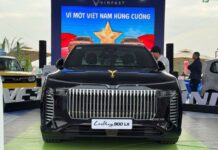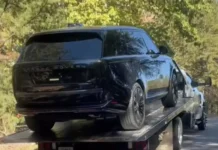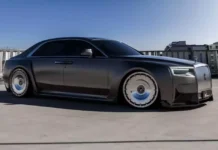The Mismanagement Mistakes in the Car Industry
Mismanagement mistakes in the car industry often lead to significant damages due to the high investment capital, which can reach billions of dollars, and the long product cycle. As a result, the consequences can last for decades.
>> Top 10 ‘kings’ of the auto industry 2013
>> 5 ways Mullaly helped Ford become powerful
A shortsighted leader can cause serious damage to any company or large corporation, and the automotive industry is no exception. Until today, the history of the automotive industry has witnessed many successful CEOs, such as Dan Akerson of GM – well-known in the press for his philanthropic activities, or Sergio Marchionne of Fiat-Chrysler who has done wonders with the comeback of the Jeep line, and Alan Mulally who has transformed the entire development history of Ford.
Admiring a successful individual and continuing their good work is right, but it is no longer true when a recession occurs. A CEO who performs well often achieves a lot of success while in office, but they can also cause negative effects when they leave their position.
However, following in the footsteps of a successful person is still much better than having to clean up the mess created by a poor CEO. Standing on that perspective, CNN in the United States has voted for the list of the 10 worst CEOs in the history of the American automotive industry.
1. Henry Ford
Chairman of the Ford Motor Company in 1903-1918 and 1943-1945
Known as a genius inventor, but Henry Ford is also one of the CEOs ranked as “poor”. Throughout his tenure, he never trusted any accountants, and as a result, he had no idea how much his company’s income and expenses were in a year. This rigidity was also demonstrated when he refused to change the style for the Model T products, despite their plummeting sales. Later, when deciding to launch the Model A, Henry Ford suddenly halted production for 17 months to be fully prepared, which was too long. GM took advantage of this opportunity to upgrade its own designs and surpass Ford to take the lead. After the death of his son Edsel, Ford found it increasingly difficult to focus on running the company, so he resigned and supported his grandson Henry II to take over.
2. K.T. Keller
Chairman of the Chrysler Corporation in 1935-1950
Coming from a mechanic background, and therefore, for managing a large corporation like Chrysler, Keller made some significant mistakes. The organizational chart of Chrysler at that time had no connection between the headquarters and other departments, making them no different from separate machines. Keller’s biggest contribution was changing the car design to include higher roofs, as he believed that Americans liked to wear hats while sitting in their cars. During his later tenure, Keller caused Chrysler to sink deeply into obsolescence for many decades.
3. Fred Donner
CEO of General Motors in 1958-1967
Donner once said that you cannot have everything in your car, so a car is a relatively combination of technological achievements at that time. Instead of producing a car aimed at technical perfection, he wanted to produce cars that were perfect in terms of finance. This relativity also led to the disastrous failure of the Corvair in improving rear-engine technology.
4. John Z. DeLorean
CEO of DeLorean Motor Company in 1975-1982
After investing $200 million in producing a sports car made entirely of stainless steel, DeLorean decided to open a factory in North Ireland. It was here that he found that making money was much easier than designing a car. Spending too much money without being able to sell the products led DeLorean to a financial crisis and became the subject of FBI investigations. In 1982, he was charged with conspiring to smuggle cocaine into the United States with a total value of $24 million. Although he was later acquitted, his company could not avoid collapse. And now, we only know the DeLorean brand through the famous Back to the Future film series.
5. Roger Smith
CEO of General Motors in 1981-1990
When Smith took office, GM held a 46% market share in the US, and when he left, that number dropped to only 35%. During his tenure, he wasted a lot of effort in diversification, automation, reorganization, and testing new products. And all that Smith left behind is a low-quality workforce, an unworthy successor, and a mountain of debt that brought the corporation to the brink of bankruptcy in 1992.
6. Bob Stempel
CEO of General Motors in 1990-1992
Stempel comes from the military and he came to GM to deal with the aftermath left by Smith. But his efforts were not enough to fix the mistakes of his predecessor. A recession afterwards officially pushed GM to the brink of bankruptcy. Stempel had a restructuring plan, but it could not become a reality. During this time, he also lost the trust of the board of directors, and his management team went through a historic coup. 17 years later, GM changed the cumbersome system thanks to financial support from the federal government.
7. Bob Eaton
CEO of Chrysler in 1993-1998
Co-Chairman of DaimlerChrysler in 1998-2000
In the first half of his term, Eaton was considered a hero for bringing a boom in light truck production, with a wide-open market for pickup trucks, Jeeps, and small trucks of Chrysler. But he failed in combining Daimler-Chrysler. Eaton almost bankrupted Chrysler, then he retired early and moved to Florida with tens of millions of dollars in stock investments. For the next seven years, Chrysler was assessed as worthless.
8. Jürgen Schrempp
Chairman of Daimler Benz in 1995-1998
Co-Chairman of DaimlerChrysler in 1998-2000
Chairman of DaimlerChrysler in 2000-2005
As a great ideologist, Schrempp intended to build a global empire by acquiring Chrysler for $38 billion in 1998. However, he was good at planning but implementing it was completely different. He could not find a common voice with his counterparts in the United States and Germany. Chrysler continued its turbulent days. After many efforts, Schrempp abruptly resigned, leaving Chrysler in countless difficulties.
9. Jac Nasser
CEO of Ford Motor Company in 1999-2001
Taking over Ford to rebuild it after a long crisis, Nasser exerted every effort to change the company’s image. Determined to focus on producing cars that serve the majority of customers, he invested billions of dollars in new brands to compete with Volvo and Land Rover. Using every means to cut jobs while improving work efficiency, he also implemented a very harsh employee evaluation system. Unfortunately, Nasser took over the company at a time of deep recession in the economy, and mistakes were inevitable.
10. Henrik Fisker
CEO of Fisker Automotive in 2009-2012
Like many other leaders, Fisker had a big plan for the company he co-founded, and his dream was to produce 100,000 cars per year. For Fisker, designing a beautiful car was not difficult, but he faced difficulties with technical issues and auxiliary systems of the car. The failure to launch new models resulted in significant losses for his company. In 2012, Fisker resigned and his successor had a hard time seeking funding from abroad.
Phan Lien (TTTD)

























































